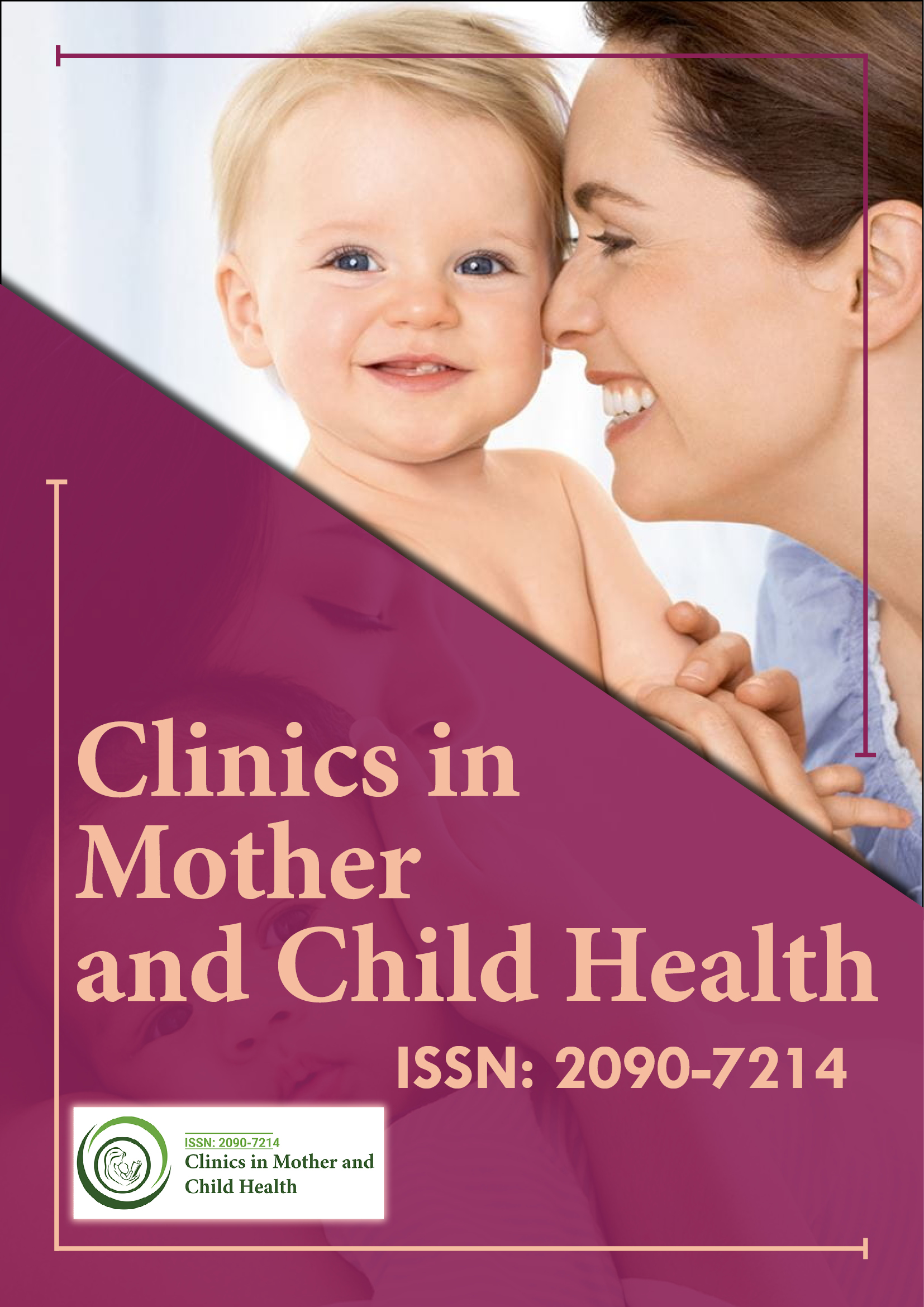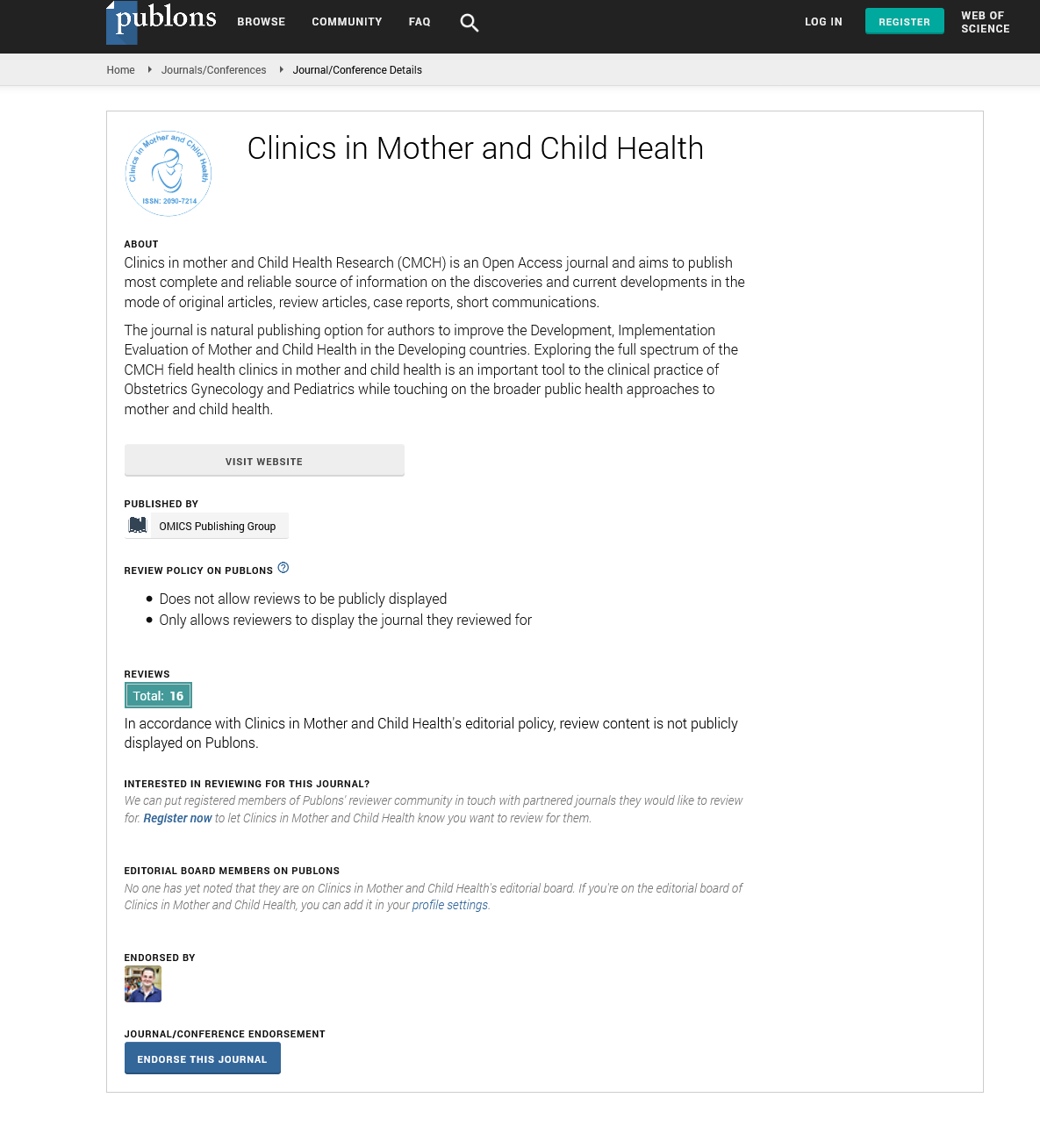Indexed In
- Genamics JournalSeek
- RefSeek
- Hamdard University
- EBSCO A-Z
- Publons
- Geneva Foundation for Medical Education and Research
- Euro Pub
- Google Scholar
Useful Links
Share This Page
Journal Flyer

Open Access Journals
- Agri and Aquaculture
- Biochemistry
- Bioinformatics & Systems Biology
- Business & Management
- Chemistry
- Clinical Sciences
- Engineering
- Food & Nutrition
- General Science
- Genetics & Molecular Biology
- Immunology & Microbiology
- Medical Sciences
- Neuroscience & Psychology
- Nursing & Health Care
- Pharmaceutical Sciences
Opinion Article - (2025) Volume 22, Issue 3
Assessment of Immunization Coverage Among Children Under Five
Marcela Nepomuceno*Received: 28-Feb-2025, Manuscript No. CMCH-25-29052; Editor assigned: 03-Mar-2025, Pre QC No. CMCH-25-29052; Reviewed: 17-Mar-2025, QC No. CMCH-25-29052; Revised: 22-Mar-2025, Manuscript No. CMCH-25-29052; Published: 31-Mar-2025, DOI: 10.35248/2090-7214.25.22.514
Description
Immunization is one of the most cost-effective and impactful public health interventions for preventing childhood illnesses, disabilities, and deaths. Vaccines protect children from lifethreatening diseases such as measles, diphtheria, polio, tuberculosis, and hepatitis B, and contribute significantly to the reduction of under-five mortality rates worldwide. Despite global efforts and progress in increasing immunization coverage, millions of children, especially in low- and middle-income countries, remain either partially immunized or completely unvaccinated. This study aims to assess the current state of immunization coverage among children under the age of five and identify key determinants affecting vaccine uptake. Routine childhood immunization schedules typically cover multiple doses of essential vaccines administered within the first year and up to five years of age. The Expanded Programme on Immunization (EPI), launched by the World Health Organization (WHO), provides a framework for universal vaccination. However, disparities in coverage persist due to socioeconomic, geographical, educational, and systemic barriers. Understanding the factors influencing immunization coverage is critical for developing targeted interventions to improve uptake and ensure that all children receive the full benefits of vaccination.
This study adopts a cross-sectional design to evaluate immunization coverage in children aged 0–59 months across urban and rural populations. Data were collected from immunization records, mother-held health cards, and structured interviews with caregivers. The study focused on key indicators including the percentage of fully immunized children, partially immunized children, and those not immunized at all. Full immunization was defined according to national immunization schedules, typically including Bacillus Calmette–Guérin (BCG), Oral Polio Vaccine (OPV), Diphtheria-Pertussis-Tetanus (DPT), hepatitis B, Haemophilus influenzae type b (Hib), measles, and other recommended vaccines depending on country-specific policies. Initial analysis revealed considerable variation in immunization coverage between urban and rural areas, with urban children demonstrating higher completion rates for full immunization. Several contributing factors were identified. Among these, maternal education emerged as a strong predictor of immunization status. Mothers with at least a secondary level of education were significantly more likely to have fully immunized children compared to mothers with no formal education. Similarly, household income and parental occupation also influenced access to and utilization of immunization services.
One of the major barriers reported was limited awareness regarding vaccination schedules and the importance of timely immunization. In many cases, caregivers either did not receive reminders or misunderstood the timing of vaccine doses, leading to missed or delayed immunizations. Other reasons for incomplete coverage included long distances to healthcare facilities, lack of transportation, vaccine stockouts, and fear of side effects. In some communities, cultural beliefs and misinformation further discouraged parents from seeking vaccinations for their children. The role of frontline healthcare workers such as auxiliary nurse midwives, Accredited Social Health Activists (ASHAs), and community health volunteers was found to be critical in influencing immunization behavior. In areas where community health workers actively engaged with families through home visits, health education sessions, and vaccine reminders, immunization rates were significantly higher. The presence of reliable immunization tracking systems and digitized records also contributed to better follow-up and scheduling of missed doses.
This study also examined drop-out rates between vaccine doses, particularly between the first and third doses of DPT and OPV. High drop-out rates indicated problems not just with access but with the continuity and sustainability of vaccination programs. Ensuring that children return for follow-up doses remains a critical challenge, especially in mobile and marginalized populations. The assessment highlights both progress and persistent challenges in achieving optimal immunization coverage among children under five. While national averages may show improvement, localized assessments reveal pockets of low coverage that require focused attention. The findings underscore the importance of multi-level strategies that combine awareness generation, logistical support, and system strengthening to improve vaccine delivery and uptake. To achieve universal immunization coverage, policymakers must invest in communitybased health education, improve supply chain management to prevent vaccine shortages, and expand mobile immunization units to reach remote and underserved populations. Leveraging digital health tools for tracking, reminders, and data collection can enhance efficiency and coverage. Moreover, empowering mothers through education and and involving local leaders in advocacy efforts can address social and cultural barriers. Ultimately, increasing immunization coverage is key to achieving Sustainable Development Goal 3, which seeks to ensure healthy lives and promote well-being for all. This study contributes valuable data and insights for health authorities, global health agencies, and community stakeholders working to protect every child from vaccine-preventable diseases and build healthier, more resilient populations.
Citation: Nepomuceno M (2025). Assessment of Immunization Coverage Among Children Under Five. Clinics Mother Child Health.22:514.
Copyright: © 2025 Nepomuceno M. This is an open-access article distributed under the terms of the Creative Commons Attribution License, which permits unrestricted use, distribution and reproduction in any medium, provided the original author and source are credited.

